READY TO GET STARTED?
REQUEST A FREE ESTIMATE
Fill out the form below or call (888) 466-7849 for a free, no-obligation estimate.
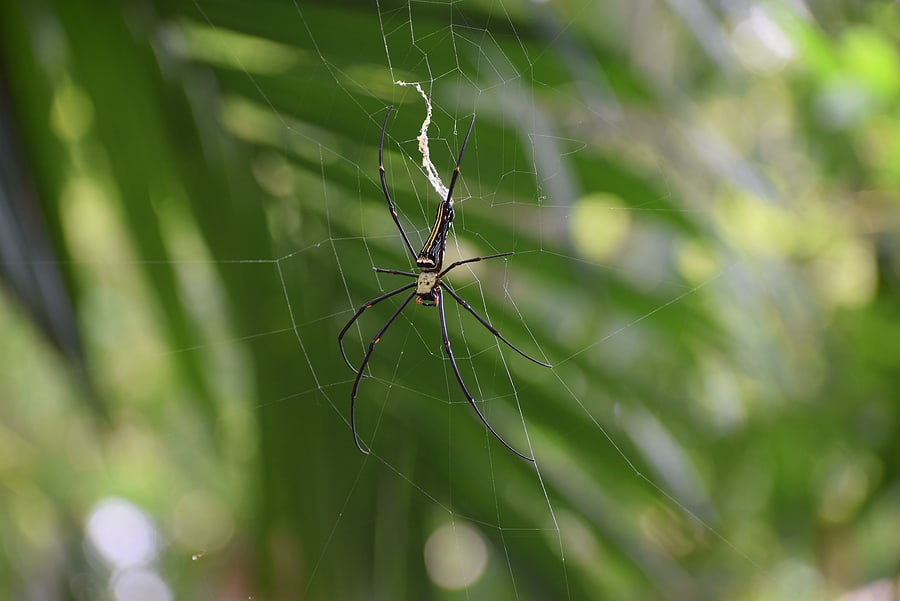
Fall weather has a significant impact on pest activity. As the days get shorter and the temperatures start to drop, many fall pests will begin to seek out warm, sheltered places to overwinter. This can lead to an increase in pests in your home and yard.
Some of the most common fall pests active in the fall include:
Prevent fall pests from invading your home this fall by following these tips:
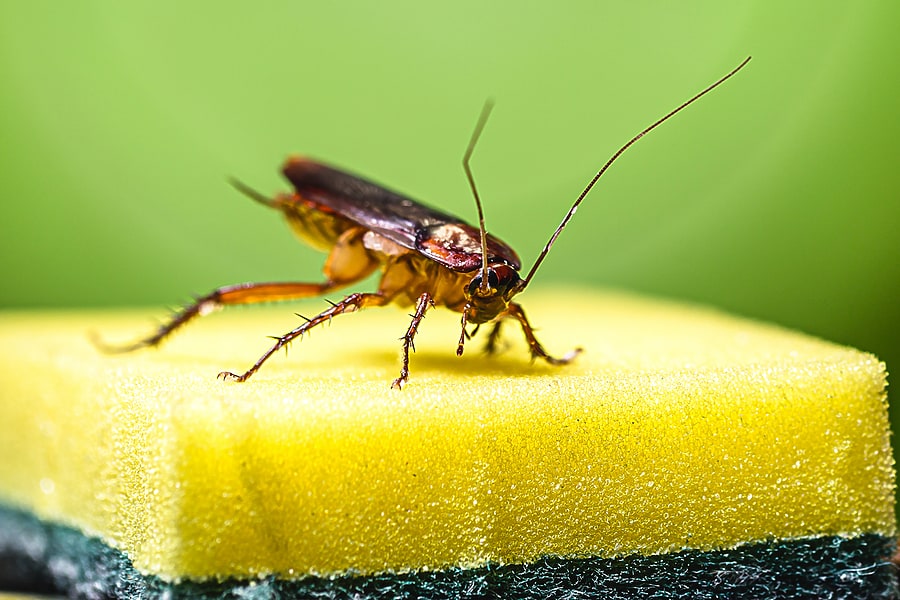
Roaches are common household pests that are highly resilient and difficult to eliminate. They reproduce quickly, making them hard to keep under control once an infestation has been established. Cockroaches will infest anywhere they can find an available supply of food, water, and shelter. They are commonly found in areas near food and moisture (kitchens and bathrooms). They are also prevalent in multiunit housing (apartments, condos, etc.). Once established in your home, roaches can cause serious health risks for you and your family. Here are some of the reasons roaches are dangerous to your health.
Roaches are known to carry at least 30 different types of bacteria including typhoid fever, cholera, dysentery, and poliomyelitis. They spread these diseases to humans by contaminating food and surfaces in our home. We can also inhale bacteria from the air near a cockroach infestation.
The allergens roaches carry can trigger asthma in those who are already afflicted with it. They are also known to cause asthma in those who didn’t previously have it. The incidence of allergic reactions can increase when roaches are present in the home. They are triggered by cockroach debris, including discarded shells, saliva, body parts, and feces. Their saliva is also known to cause skin rashes and sneezing.
Roaches can be found scavenging through the trash, dumpsters, on spoiled food, and even feces. They pick up contaminants from these surfaces as they crawl through them which stick to their legs and bodies and are then left behind as they crawl across our food and clean surfaces. When we eat food or touch surfaces that have been contaminated by roaches, it can cause sickness for us, as well.
Making your home less inviting to roaches is the first step in preventing them. Here are some cockroach prevention tips you can utilize in your home.
If you have a problem with roaches or other household pests, contact your local pest control company for an inspection.
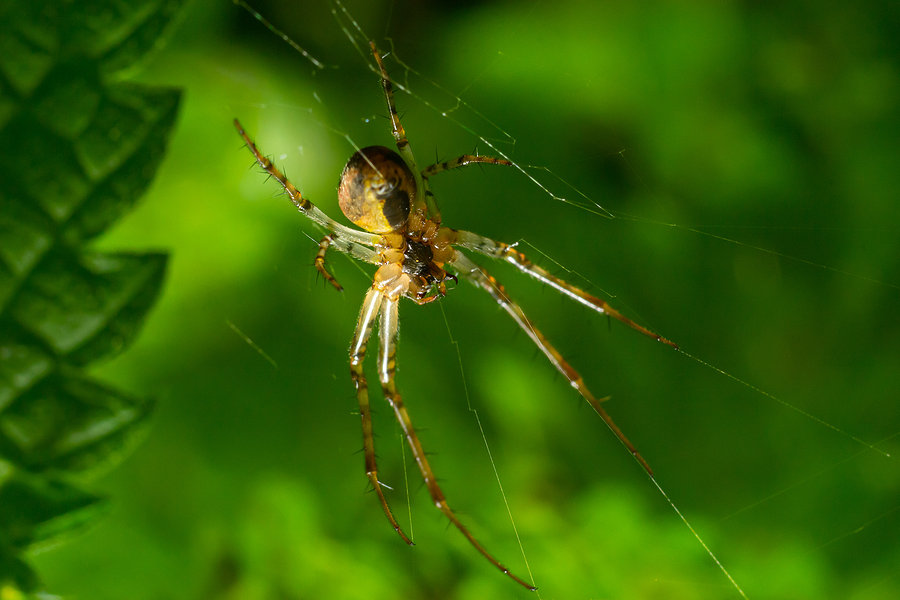
The thought of spiders in your home is enough to make anyone feel a little unsettled, but these household pests are actually beneficial to have around. They are a natural form of pest control, keeping other pest populations like mosquitoes and flies under control in and around your home. Although there are a few venomous spiders found in our area, most others are harmless and don’t pose a threat to you or your family. While it’s not realistic to expect to eliminate every spider from your home, you can make it less inviting for them to help keep them out without the use of harsh chemicals or pesticides. Here are 7 natural spider control remedies you can use around your home.
There are several plants you can place inside and outside your home to naturally deter spiders from coming around. Lavender, mint, eucalyptus, and citronella are known to deter spiders from building their webs near them. If incorporating these plants into your landscaping isn’t a possibility, you can also spray essential oils with these scents, in addition to peppermint or tea tree oil, anywhere spiders are a problem. You can also crush mint and place it in sachets inside your cabinets or other areas where spider activity is high.
Spiders are masters of hide and seek. They can be found hiding in cracks, crevices, cabinets, knotholes, behind baseboards, inside seldom used items in your home (such as shoes), under rocks, in woodpiles, and under piles of leaves and dirt. By getting rid of these hiding places you can encourage spiders to seek shelter somewhere besides in your home. Move leaves, grass clippings, compost and woodpiles away from your exterior walls. Dust and declutter your home on a regular basis. Frequently dust any areas where cobwebs appear. Organize your storage areas and get rid of any empty boxes.
Spiders spin webs to trap their prey as a food source. If you come across spider webs either inside or around your home, remove them as soon as possible. Eventually the spiders will move on and build their webs somewhere else.
While spiders aren’t attracted to your outdoor lights, other pests that they feed on are. Mosquitoes, flies, gnats, and other common prey for spiders are drawn to your outdoor lights, providing a literal buffet for a waiting spider. Keep your outdoor lights off as much as possible to help cut down on your outdoor pest populations.
Diatomaceous earth is a crumbly material made of the fossilized remains of an algae called diatom. DE can be sprinkled on the ground around your home and used as an insecticide. DE kills several pests in addition to spiders and can be used around your family and your pets.
There are some organic substances that work as natural repellents for spiders. Vinegar is a common one. The acetic acid in vinegar gives a sour taste and odor to spiders who come into contact with it. Mix equal portions of vinegar and water in a spray bottle and spray it around your home, especially in areas where pests may be getting inside. Citrus is also a natural spider deterrent. Keep citrus fruits in a bowl on your kitchen counter and use the leftover peels to rub onto your windowsills and doors to help keep spiders out.
Spiders can get in through the tiniest cracks and crevices in your home. Make sure to regularly inspect the exterior of your home and seal any places where pests might be gaining entry inside. Be sure to check doors and windowsills and use caulk or weatherstripping to seal any cracks and openings.
While most spiders don’t cause any problems in your home, they can become a nuisance, especially in your yard or garden. Webs can be built in inconvenient places; they can cover your plants or hide blooms, stunting their growth. If you have a problem with spiders or need some help getting them under control, contact your local pest control company for an evaluation.
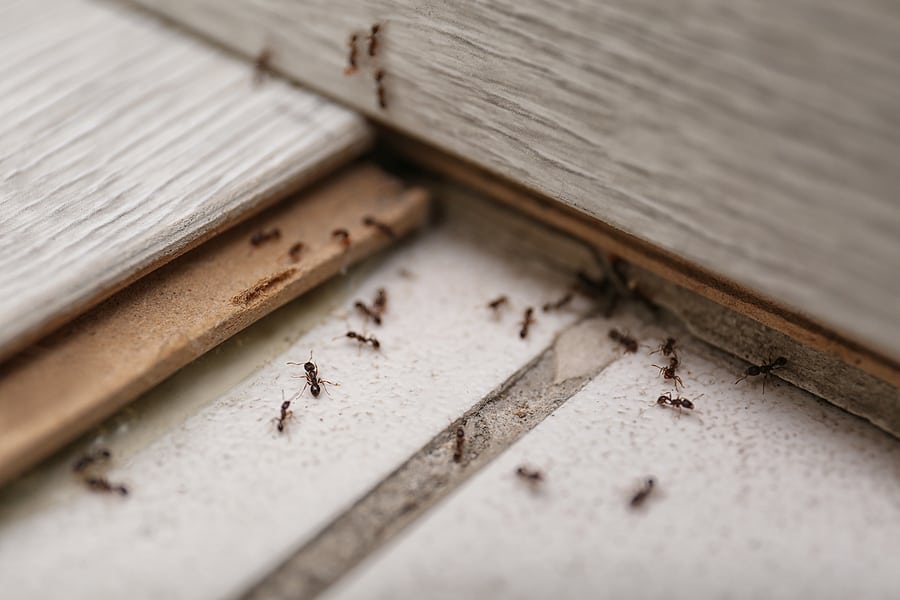
Home ownership comes with loads of responsibilities, with pest control one of the most important. Routine pest control is a sound investment that helps protect both your investment and the health of your family. Here are 5 benefits to routine pest control.
Routine pest control allows professional pest control technicians to identify potential pest problems before they become full blown infestations. Once identified, preventative measures can be put in place to help keep pests from coming back. By thoroughly inspecting your home, these professionals can give you tips to seal entry points, repair any problematic areas, and make changes to reduce things that attract pests to your home in the first place.
Pests can not only carry diseases, they also can trigger allergies and asthma and contaminate food and surfaces throughout your home. Many pests are also attracted to moisture. If you have areas where there are leaks, wet or rotted wood, or other high moisture content, this can lead to mold and bacteria which is also extremely unhealthy for you and your family. Routine pest control helps correct these unhealthy conditions that can attract pests.
Catching pest problems early saves you money in the long run. It is less costly to treat a problem early than it is to treat a full blown infestation. Not only that, if an infestation is allowed to grow over a long period of time, these pests can do significant damage to your home, not only costing you money to treat for the pests, but also for expensive repairs to any damage they’ve caused.
Pest control professionals can help identify any problem areas like moisture issues, leaks, cracks in foundation, openings around doors and windows, roof damage, and crawlspace issues. These issues can lead to water damage, increased utility bills, put more work on your HVAC systems, causing them to wear out sooner, and even structural damage to your home. By identifying these issues earlier, you can repair them sooner, hopefully preventing even more damage by leaving them untreated.
With routine pest control, there’s no need to wait until a pest problem arises. Visits are scheduled on an ongoing basis, saving you the hassle of calling around to find someone who can come out at the last minute. This also guarantees you priority if an issue comes up in between your regularly scheduled visits. Your technician will also be familiar with you and your home, making it easier to identify where the problem might have started and how to remedy it quickly and efficiently.
Contact your local pest control company today to get started with your routine pest control needs.
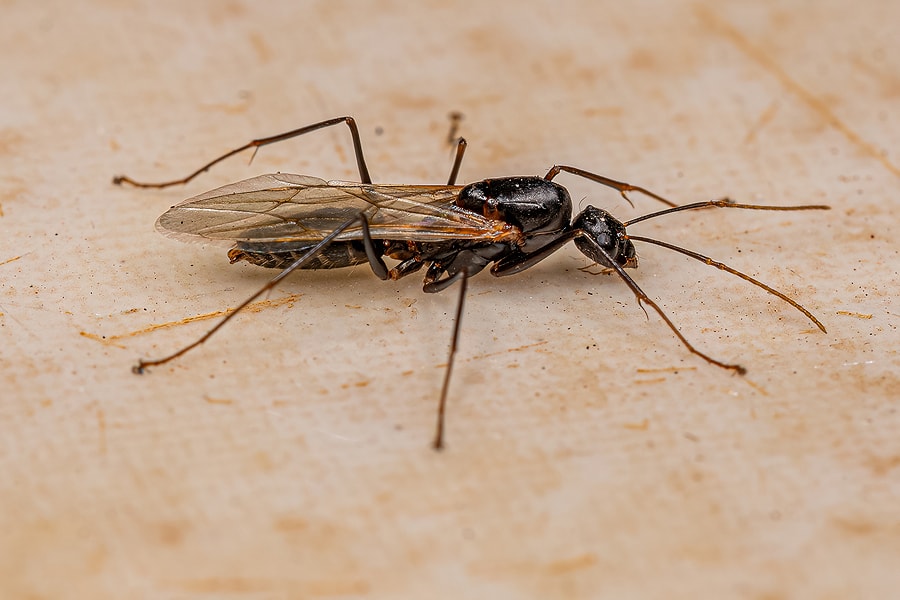
Carpenter ants and termites can wreak havoc on the wood frame of your home. Prevention and treatment depends on which species you are dealing with. How can you tell the difference between these two winged insects? Here we look at the differences in carpenter ants vs termites, along with how to eliminate them.
Carpenter ants (Camponotus) and termites (Isoptera) have many similarities, including the fact that both are infamous for causing wood damage in homes. Aside from the size of their wings during reproduction, termites are nearly the same size as the several species that make up the carpenter ant group; and, like carpenter ants, termites burrow into wood, allowing them to destroy your home’s wood frame. Because both carpenter ants and termites swarm in the spring to mate, homeowners who observe the swarms frequently confuse them.
Ants and termites have quite different lifespans—termites live longer because of their lengthy life cycle. While the queen carpenter ant can live for up to ten years, male carpenter ants marry and then die within a few months, if not weeks. Ants have four life stages: egg, larva, pupa, and adult. Termites, on the other hand, have a longer lifespan: the queen can live for more than 30 years, while worker and soldier termites live for one to two years and swarmers, aka reproductive termites, live for three to four years. Termites have a lengthier life cycle than ants, with five stages consisting of egg, larva, nymph, molt, and adult.
Termites can do more damage to homes than carpenter ants, causing major damage when left undetected for long periods of time. Carpenter ant damage can take years to develop and is usually easier to notice because these ants congregate in moist locations and can be seen darting around.
A closer examination of the pest in question reveals substantial physical distinctions that make it easy to distinguish between termites and carpenter ants. Examine the insect closely with a magnifying lens, or shine a bright light on it and use your naked eye.
The two insects interact with wood in various ways. Termites, for example, consume the wood in which they nest. Carpenter ants excavate their nests by digging into the wood; they do not eat the wood but rather push it out via holes in their colonies’ galleries. If you observe small heaps of wood shavings or frass (insect excrement) below the holes, it can help you identify a carpenter ant infestation. Carpenter ants prefer moist and damaged wood in which to build their nests, whereas termites will munch right through healthy wood.
Another noticeable difference is the appearance of the wood tunnels. Carpenter ant tunnels and galleries will be smooth and finished, whereas termite galleries will be rough and ragged because they are filled with layers of soil and mud.
Finally, the presence of mud tubes can help you identify which pest you are dealing with. A mud tube shows the presence of termites, either currently or previously. These are tubes that are created on the outside of walls or between earth and wood to serve as routes for termites.
Because carpenter ants and termites are so different, effective control strategies for each are likewise different. Carpenter ants can often be handled by removing the conditions that attracted them, but a termite infestation would usually necessitate a termite control expert. If you have a problem with either of these winged insects in or around your home, contact your local pest control company for an evaluation.
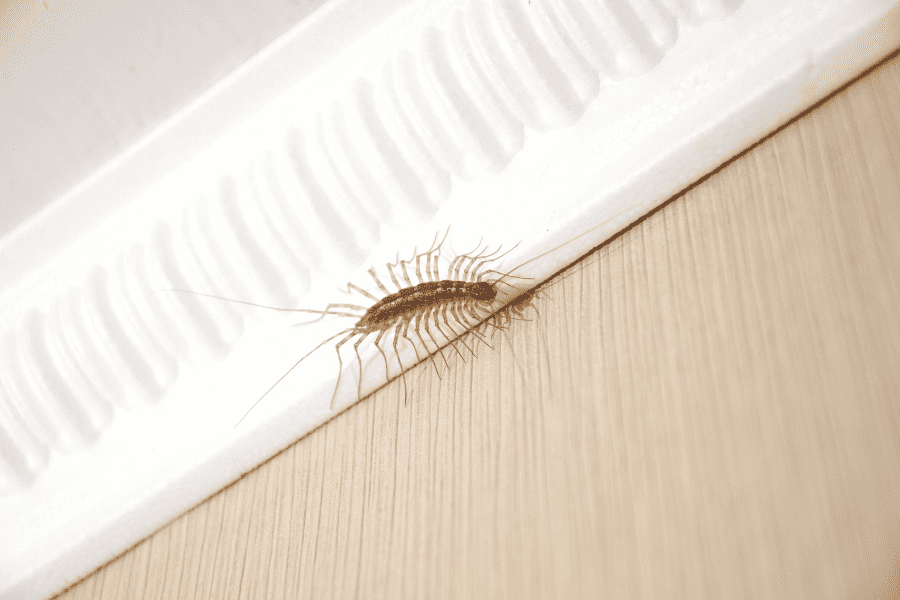
Summer is a time of warmth, sunshine, and relaxation. Unfortunately, it’s also a time when a variety of pests are most active. From ants and flies to roaches and centipedes, these insects can be a major annoyance and even a health hazard. Discover common summer pests below:
Ants are a common sight in the summertime, especially in kitchens and pantries where they search for food. To prevent ants from invading your home, make sure to keep your kitchen clean and free of crumbs and spills. Store food in airtight containers and keep ripe fruit in the refrigerator. Sealing cracks and holes in your home’s foundation and walls can also prevent ants from entering.
Flies are a common summertime pest, buzzing around and spreading germs wherever they land. To prevent flies from invading your home, make sure to keep doors and windows closed or screened, especially during the hottest parts of the day. Keep your kitchen clean and dispose of garbage regularly.
Roaches are another unwelcome summertime pest. They can carry diseases and trigger allergies in some people. To prevent roaches from entering your home, seal any cracks or gaps in your home’s foundation and walls. Keep your kitchen clean and free of crumbs, and store food in airtight containers.
Centipedes can appear creepy, with many legs! They are often found in dark, damp areas such as basements and bathrooms. To prevent centipedes from invading your home, keep these areas dry and well-ventilated. Seal any cracks or gaps in your home’s foundation and walls.
If you begin seeing these summer pests around your home, give your local pest control company a call for a free inspection and a customized treatment and prevention plan!
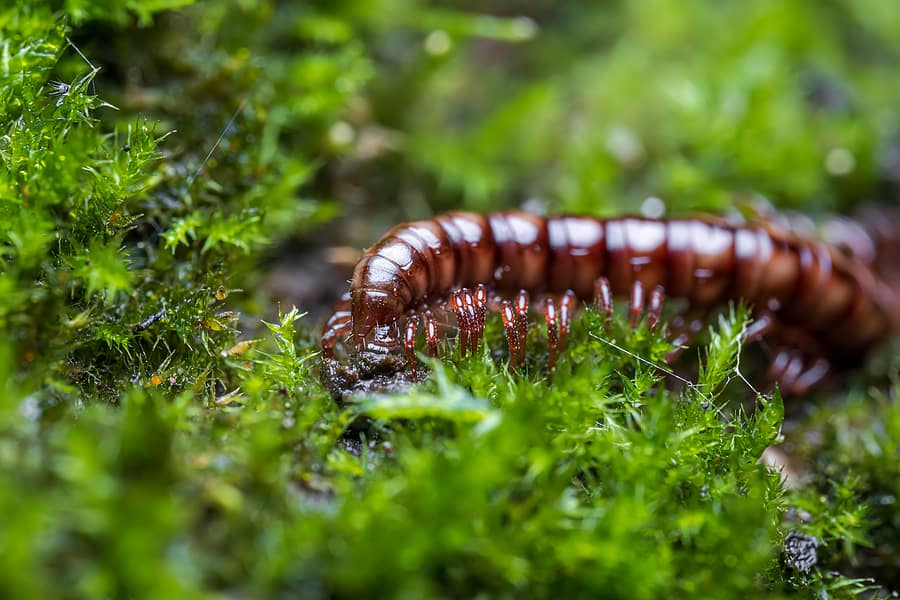
Centipedes and millipedes are two common household pests that are often mistaken for each other. How can you tell them apart? How can you tell if they’ve infested your home? Learn the difference between centipedes and millipedes, along with tips to prevent both of them from taking over your home.

Centipedes have elongated, flat, segmented bodies with 1 pair of legs per segment. They can have anywhere from 15 to 177 pairs of legs. They have long antennae on their heads, as well. They can come in a variety of colors but the most common species are either brown or reddish-orange. These pests are attracted to damp, dark areas like basements, bathrooms, and closets.
Centipedes are nocturnal and can move very fast, making them hard to spot by homeowners. In fact, the only real sign of centipedes in your home is spotting live pests.
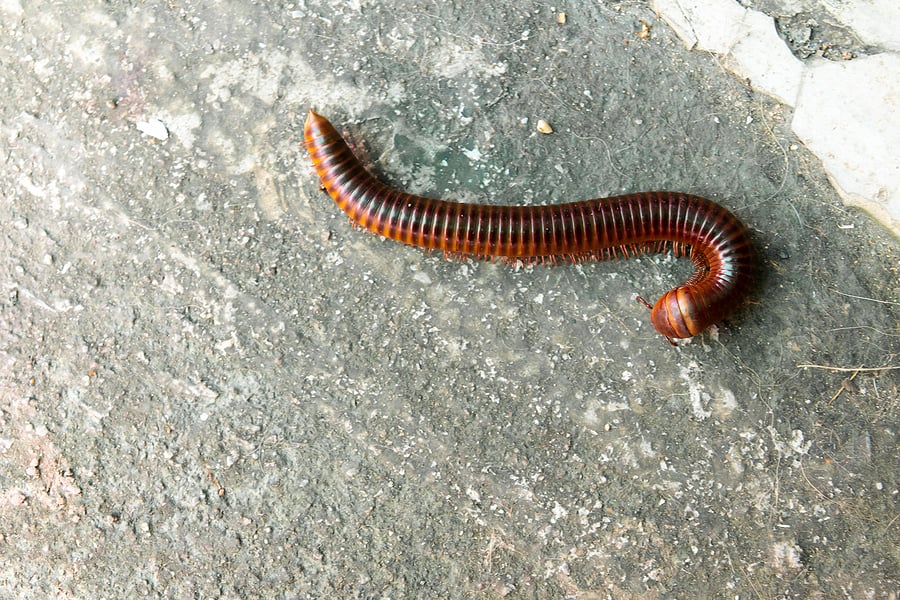
Millipedes have long, cylindrical bodies with 2 rows of legs on their bodies and 1 row of legs on the front of their bodies. They grow to about 1 to 2 inches in length. These pests will curl into a ball when touched or threatened. They prefer dark, damp spaces and are often found under wood piles, under rocks, and under trashcans. When they come indoors, they can often be found in attics, basements, sheds, and crawlspaces. These pests eat damp and decaying wood particles and plants.
Millipedes are also nocturnal so spotting them can be difficult. Signs of millipedes include seeing live pests in your home and signs of structural damage. These pests will eat damp or decaying wood so look out for damage to firewood, cardboard boxes, etc.
Although centipedes and millipedes don’t pose a significant threat to humans or homes, they can be a nuisance to have around. Routine pest control can help keep these, and other common household pests, from taking over your home. Contact your local pest control company for an inspection.
How to Identify Stinging Pests in the Southeast
How To Avoid Mosquito Bites this Summer
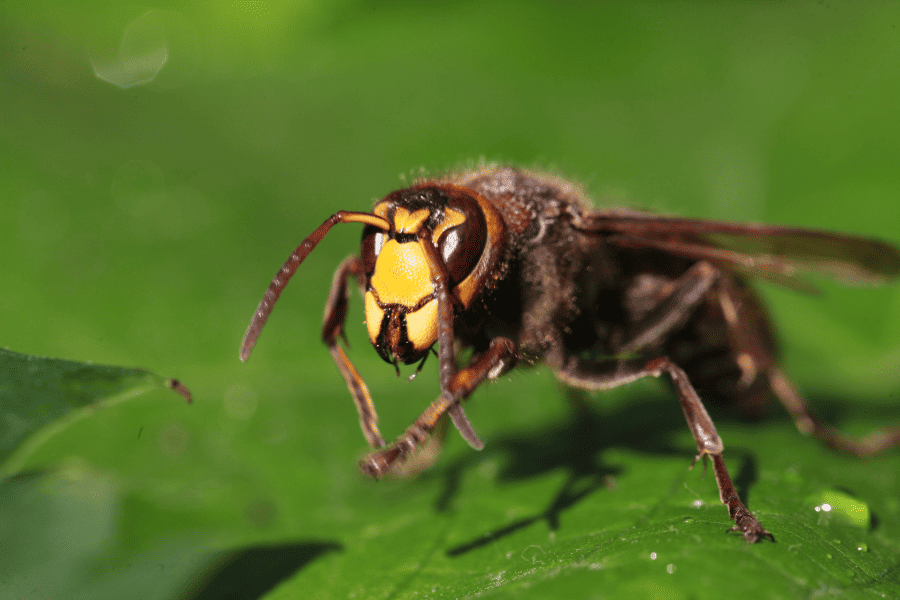
Stinging pests can be a real nuisance, and in some cases, a danger to your health. From hornets and wasps to fire ants, these pests can leave painful stings that can cause itching, swelling, and in severe cases, anaphylaxis. Let’s take a closer look at the different types of stinging pests and provide tips on how to prevent and identify them.
Hornets: Hornets are large, aggressive wasps that can pack a powerful sting. They typically build large paper nests in trees, bushes, and other outdoor locations. To prevent hornets from nesting on your property, inspect your home’s exterior regularly and seal any openings or gaps. Keep your outdoor trash cans sealed and dispose of food waste properly. If you do encounter a hornet’s nest, do not attempt to remove it yourself. Instead, call a professional pest control company.
Wasps: Wasps are similar to hornets, but they tend to be smaller and less aggressive. They can still pack a painful sting, however, and they can build their nests in a variety of locations, including under eaves, in trees, and shrubs. To prevent wasps from nesting on your property, keep your home’s exterior well-sealed, dispose of food waste properly, and keep outdoor trash cans sealed. If you do encounter a wasp nest, call a professional pest control company to safely remove it.
Fire Ants: Fire ants are small, reddish-brown ants that are known for their painful sting. They build large mounds in lawns and gardens and can be especially active during the summer months. To prevent fire ants from taking over your yard, keep your lawn well-maintained and avoid leaving piles of leaves or other debris in your yard. Treat fire ant mounds with bait or insecticide specifically designed for these pests and wear protective clothing and gloves when working in the yard.
If you discover an influx of stinging pests around your home call a professional pest control company if you do encounter a nest or infestation.

Insect repellent is not only used to prevent bites from insects; it also plays a vital role in public health. Proper repellent protects large populations of people from the diseases spread by mosquitoes and other biting insects. With that in mind, the next question is, what is the best repellent to use? There are several options available worldwide but two of the most common are those containing DEET and picaridin. Let’s break down the pros and cons of each.
DEET has been used since its development in the 1940s. It was originally developed to protect US soldiers from mosquito-borne diseases while they were serving overseas. It is considered the most popular repellent product on the market and, in fact, is endorsed by the World Health Organization. Because it has been available for such a long period of time, there is a large volume of data on its use, safety, and efficacy.
DEET is a synthetic compound that is effective at repelling mosquitoes and ticks for anywhere from 1 to 6 hours, depending on how high of a concentration is applied. It also has a low rate of adverse effects.
Adverse effects are usually only reported when a high concentration of product is applied. For this reason, it is recommended to use a lower concentration with more frequent applications. The most common adverse reaction is a rash and skin irritation. Some people report an aversion to the smell. Others dislike the greasy residue DEET leaves on the skin.
DEET is known to dissolve some plastics and can cause damage to sunglasses if not cleaned off immediately. It can also damage some synthetic materials like spandex, rayon, and vinyl, which commonly make up clothing worn during the time of year when mosquitoes are active.
Picaridin was developed in the 1980s and was made available in Australia and Europe on 1998 and the US in 2005. The delay in availability was due to the need for ongoing testing regarding safety and efficacy. It is now the best selling repellent in both Europe and Australia. Picaridin is reportedly as effective as DEET.
Picaridin is a synthetic chemical produced to mimic the naturally occurring piperidine. It is also known as icaridin. The EPA has deemed picaridin safe for use on human skin. Proponents of picaridin prefer it over DEET because it is not as greasy, is odorless, and doesn’t damage plastics or synthetic clothing. Some US companies are already producing products containing picaridin, such as Cutter Advanced, Sawyer Premium, and Repel Smart Spray.
Picaridin doesn’t appear to have any negative effects on the environment. It is mildly toxic to some fish in large doses but is nontoxic to birds and land mammals. It may bind to soil but it is broken down by bacteria in the soil before it can leach into groundwater.
Both DEET and picaridin are considered safe for human use. Both are proven to be effective at repelling mosquitoes and other biting insects for about the same length of time. The CDC does not recommend the use of either product in infants under 2 months of age. They do recommend the use of either for children older than 2 months of age and for adults. the EPA also considers both products safe for use during pregnancy.
It is important to note that picaridin is shown to be AS effective as DEET but not MORE effective than DEET. When deciding between the two, the decision is based less on efficacy and safety and more on personal preference.
As always, if mosquitoes or other biting insects are causing problems for you in or around your home, contact your local pest control company for a free evaluation.